Intrigue and mystery are powerful psychological elements when effectively utilised within a painting. The ability to make subtle suggestions in a composition that inspire curiosity and ignite the observer’s imagination reflects a painter who is in full control of his canvas.
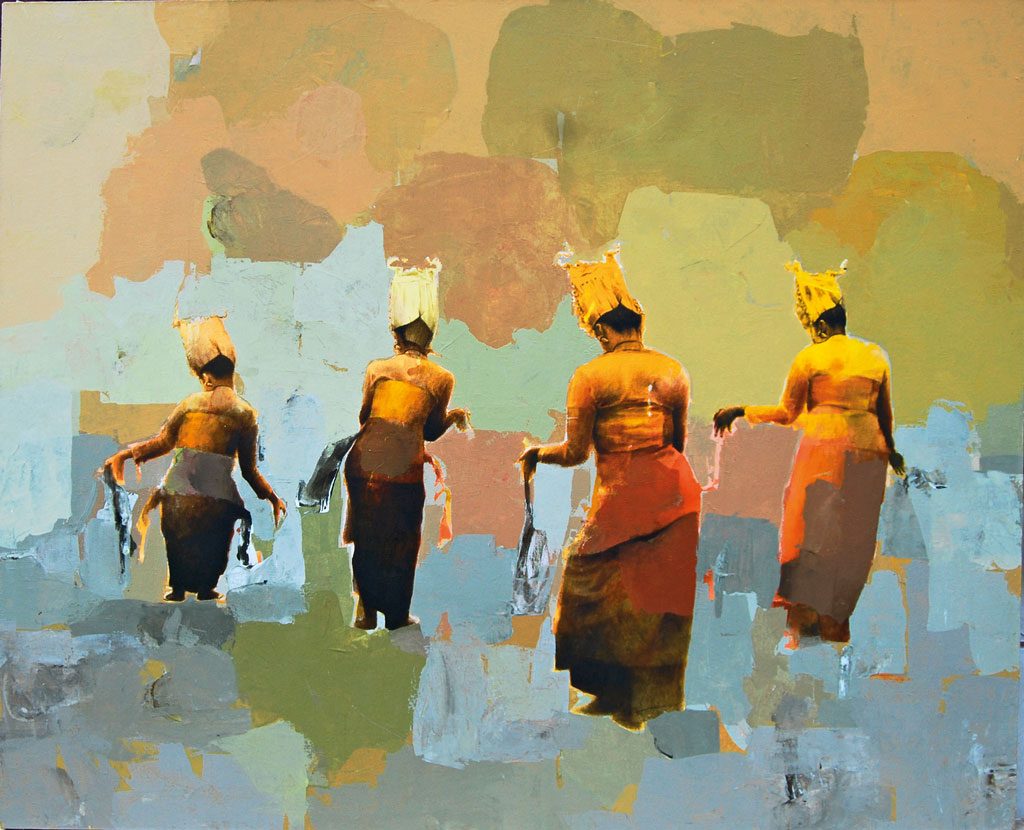
Colour and form are the potent visual fundamentals of a painting that we respond to – they are the fundamentals that inform our conscious and subconscious minds. We then recognise colours and shapes and immediately make associations with objects in our surrounding world. On the deeper, subconscious level, colour and form are distinct vibrational codes that resonate with our inner architecture and core.
Balinese modern artist Made Galung Wiratmaja understands how to create captivating paintings – compositions that balance colour with form to catch the eye and incite fascination. Over the past two decades he has explored the abstract, abstraction and figurative expressionistic painting styles. Abstraction paintings reveal a very simple and incomplete depiction of form, abstract compositions, on the other hand, are nondescript arrangements of colour and unknown shapes that are without any physical references that we recognise.
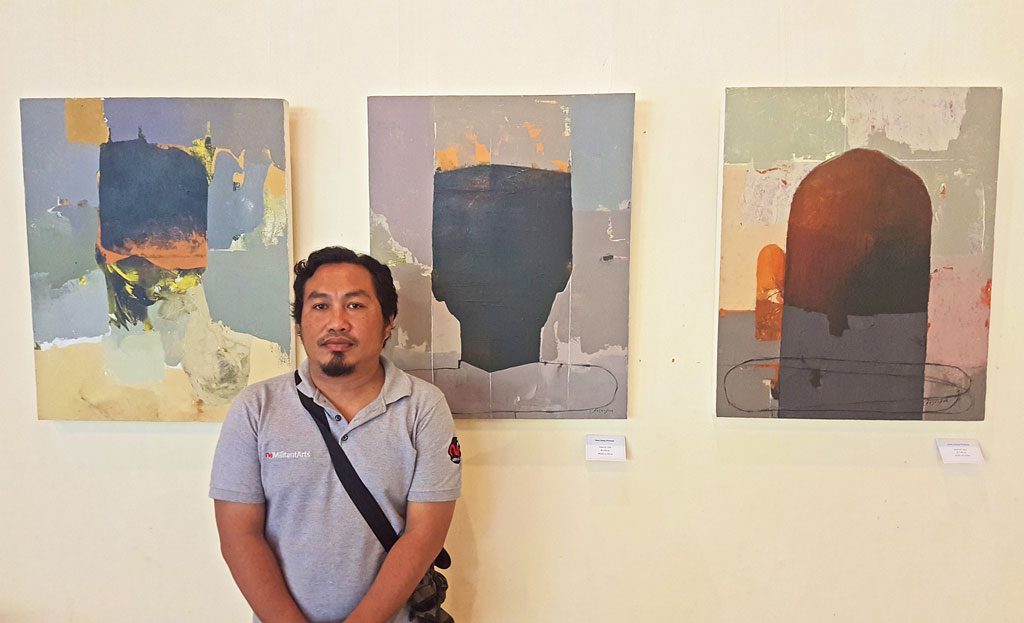
I love painting – I find it such a fascinating and inspirational force. Yet a painting is simply some paint applied to a two-dimensional surface, be it a compelling composition of technical mastery, or an expression that requires little time and skill to complete. What sparks my curiosity is how easily our minds are led, and how quickly we believe in the painted illusions that appear before our eyes. As Picasso once said, “Art is a lie, that makes us realise the truth.”
In “Ambang Embang”, a 2018 group exhibition at the Agung Rai Museum of Art (ARMA), in Ubud, Galung exhibited three abstractions of the Lingga, an upright object symbolising fertility and representing the phallus of the Hindu god Shiva. Entitled “Totem #1,2 & 3” his compositions ‘evolve’ within a sequential series that wonderfully suggest the shoulders and head of the human body. His use of colour, shape and line imply enough decipherable information for our mind to make immediate associations.
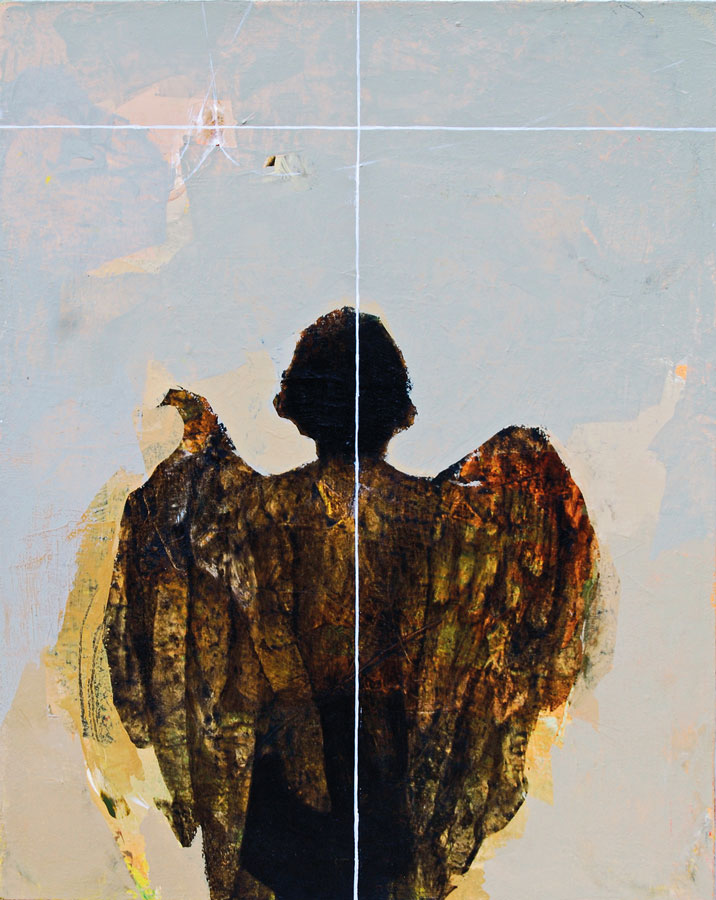
Angel 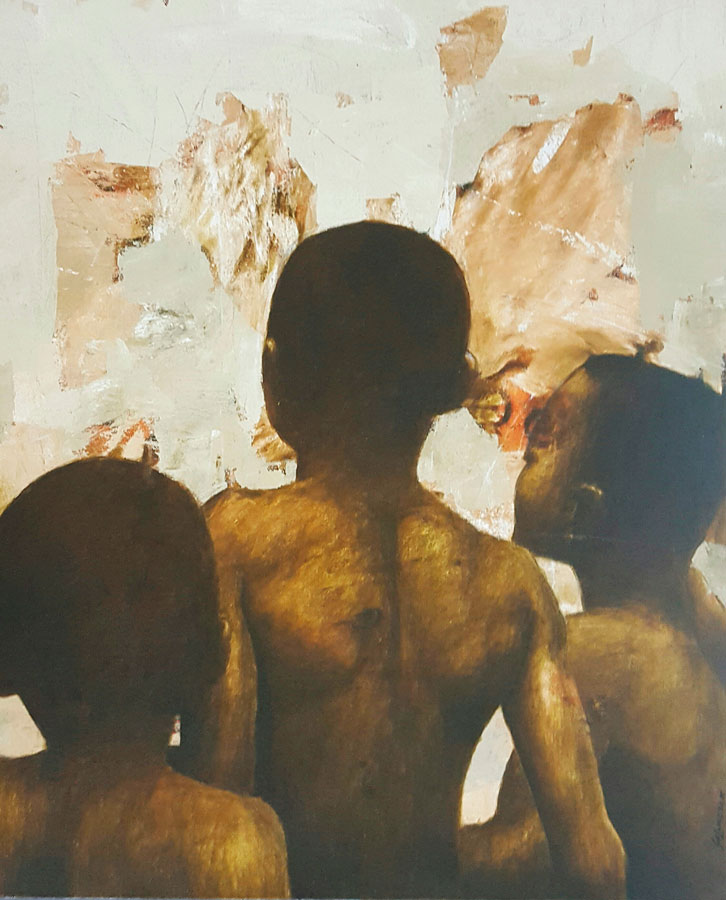
Little Child with Imaginezone
“Facing Reality” Galung’s recent solo exhibition, open 5 March – 6 May at The Oberoi, Seminyak, and presented by Indonesian Fine Art, features nine figurative expressionistic paintings. In these works the artist combines an array of human figures positioned, mostly, with their backs to the observer, seemingly peering into the colourful abstract backgrounds. His unusual compositions immediately incite appeal, and we wonder what his figures are indeed doing, and what is it the artist wishes to say.
In “Founding Father”, Indonesia’s first President, Sukarno is the focal subject, while one work features a large group of people, and in another appears a Balinese family in traditional attire.
What is particularly alluring is that his figures are not facing and addressing the audience. They are in interrelationships with unfamiliar backgrounds and this conjures up within us many different responses.
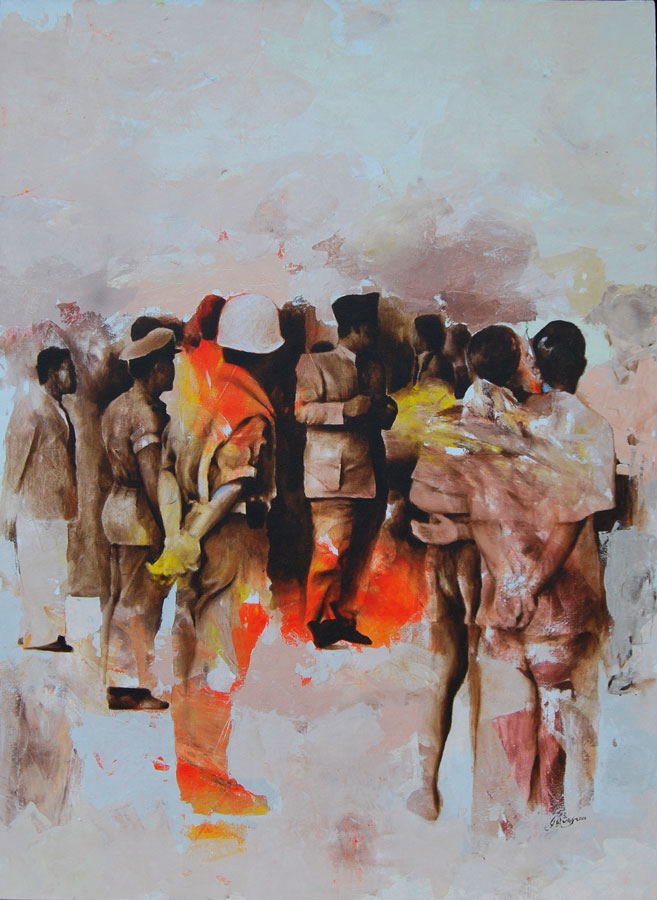
“I enjoy making compositions that feature mysterious elements and that provoke the audience’s imagination. I want that observers to discover their own interpretations – all readings are valid,” the artist says. “In the compositions depicting Balinese people I make identity statements of what it means to be Balinese, and of the two worlds in which we inhabit.”
The paintings reveal two contrasting visual realities according to the Balinese understanding of sekala/niskala – the seen, and unseen worlds. In the realm of sekala is all that is of the physical form, while the niskala is the non-physical, spiritual world consisting of the gods, ancestors and nature spirits. Balance is the key to Galung’s choice of colours that are a mixture of subdued ochre’s, greens, browns and greys that create interesting and unusual contrasts. They are never over powering. “My colours reflect my personality, not too bright, yet not too dark,” he says with a smile.
“Tari Persembahan” (Dance Tribute) depicting four Balinese Legong dancers is an exhibition highlight. The figures Galung generally depicts are stationary, appearing rigid, in a type of silent contemplation, in a departure of style his Legong dancers blend and harmonise within a field of vibrant motion, and the composition has a distinct visual tension.
“Often while painting my mind becomes detached from the creative process,” the painter says. “My hand guides the brush without me being conscious and compositions mysteriously appear before my eyes. At times I work with a clear concept in mind, and others times not. The outcomes are always surprising, and harmonic.”
About five years ago Galung’s works really caught my attention. Born in 1972 in Sukawati, GIanyar, he studied Fine Art at Udayana University in Denpasar and started painting at the age of thirteen. To his distinction Galung has succeeded in creating his own signature style. He certainly deserves recognition and increasing exposure.
Words: Richard Horstman
Images courtesy: Richard Horstman & Indonesian Fine Art









